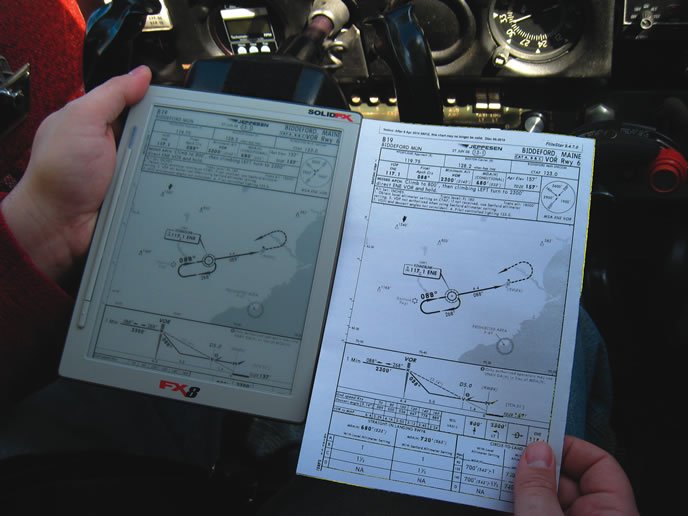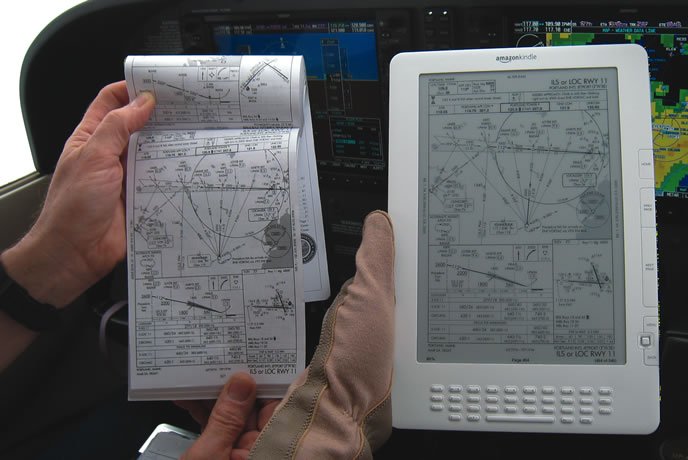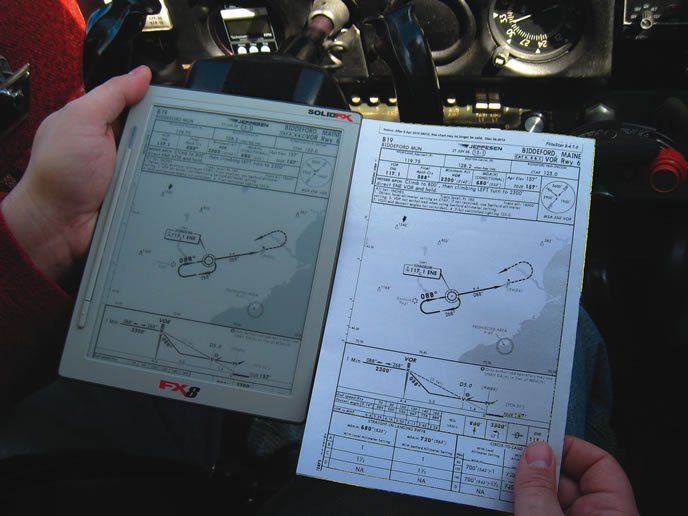Anyone who has hauled around the paper approach plates for more than a couple U.S. states has wished for a better way. It seems like a digital reader should be a no-brainer, but getting the size, weight, navigation and readability right turns out to be a tough nut to crack.

The best effort we’ve seen to date is the FX8 reader for Jeppesen plates from SOLIDFX. It’s best for two reasons: The hardware is lightweight enough and the screen big enough that it rivals paper in comfort, and the software to retrieve and organize charts makes it as easy to get to the right chart on the FX8 as it would be if you pulled all the charts you needed from your Jepp binder and had them organized in a chart wallet or with plastic tabs. You can use the digital pen to make notes on the charts as well.
The downside of the FX8 is that you must use that special pen to control it efficiently, and, of course, the price of the Jeppesen chart subscription.

For NACO plates, the best we’ve seen is the Kindle DX, which actually displays plates slightly larger than paper. But we find the Kindle too big for easy use. And none of the NACO plate readers have good retrieval and organization. Given how many small companies are trying to offer a NACO plate reader, we expect steady progress here. ReaderPlates has a package for the Sony PRS-900 that looks promising. PDFPlates is also a company to watch.
All the e-readers have black-on-light-gray screens that are a shade harder to read than black-on-white paper. Not a deal-breaker and something that may disappear as soon as more devices like the Apple iPad hit the streets.





